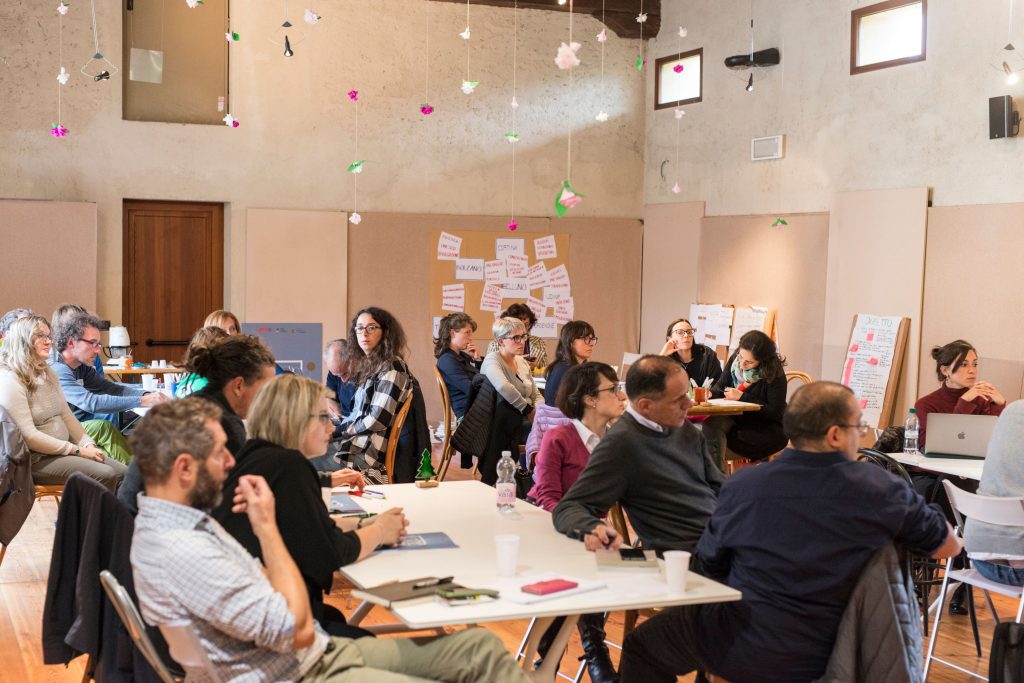Building capacities of mountain hut owners and managers
Meeting of mountain hut owners
Fondazione Dolomiti UNESCO
Capacity building activity with mountain hut managers
Fondazione Dolomiti UNESCO
Meeting of mountain hut owners and managers
Fondazione Dolomiti UNESCO
In 2016, the UNESCO Dolomites Foundation in cooperation with the association of mountaineer and mountain climbing and the owners and managers of 66 mountain refuge in the core area of the Property, have launched the project “Dolomites UNESCO World Heritage Mountain Huts”. The project aims at strengthening the capacities of mountain hut managers as key stakeholders for the effective management of the Dolomites and key actors in the communication and promotion of the values of the Dolomites.
This partnership has been further strengthened through the adoption of the Convention of the Dolomites UNESCO World Heritage Mountain Huts in 2017, which focuses on boosting the symbolic role of refuges, promoting them as information providers and raising the standard of their accommodation and their environmental performance.
The project focused not only on the installation of information panels and point, but also on training and capacity building activities dedicated to mountain hut owners and managers. These activities focused on UNESCO World Heritage key information and on understanding the Outstanding Universal Value of the Dolomites and its management structure.
A framework for cooperation between the UNESCO Dolomites Foundation, the associations of mountaineers and mountain climbing and the 66 mountain hut managers.
The experience of the #Dolomites2040 participatory process, which through the involvement of all relevant stakeholders had identified the essential role played by hut owners in safeguarding the site and the wider territory (experiencing local culture,opportunities for people to meet and stay within the Dolomites).
Additionally, the project was supported by the cooperation with the Trentino School of Management.
The process created a chance for the engagement of key stakeholders. The refuge owners and managers play a key role in the contact with the general public and visitors. They awareness is key in shaping a more sustainable and site-friendly visitor experience.
The inscription of the Dolomites on the World Heritage List has allowed for people to become more aware of the natural and cultural value of the Dolomites and its rich cultural landscape, the project became a chance to acknowledge and communicate the cultural values of the site.
The project offered a chance for mountain hut owners and managers to become more actively engaged in the communication and promotion of the values of the Dolomites, and also in enhancing
If used carefully, the UNESCO World Heritage status can be used as a certification to support the sustainable development of tourism activities. This requires the wider inclusion of key stakeholders.
